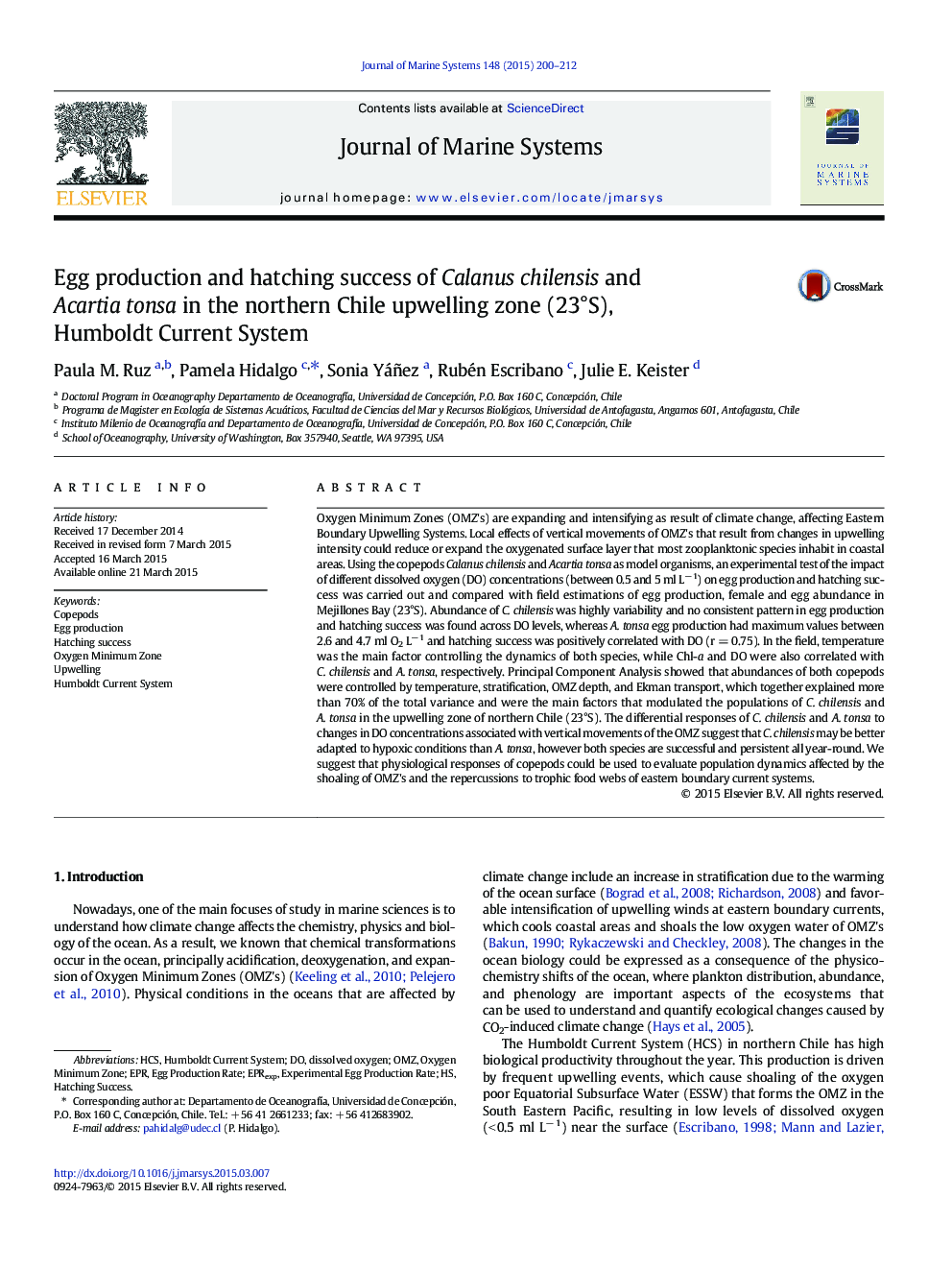| کد مقاله | کد نشریه | سال انتشار | مقاله انگلیسی | نسخه تمام متن |
|---|---|---|---|---|
| 6386733 | 1627281 | 2015 | 13 صفحه PDF | دانلود رایگان |
عنوان انگلیسی مقاله ISI
Egg production and hatching success of Calanus chilensis and Acartia tonsa in the northern Chile upwelling zone (23°S), Humboldt Current System
دانلود مقاله + سفارش ترجمه
دانلود مقاله ISI انگلیسی
رایگان برای ایرانیان
کلمات کلیدی
موضوعات مرتبط
مهندسی و علوم پایه
علوم زمین و سیارات
اقیانوس شناسی
پیش نمایش صفحه اول مقاله

چکیده انگلیسی
Oxygen Minimum Zones (OMZ's) are expanding and intensifying as result of climate change, affecting Eastern Boundary Upwelling Systems. Local effects of vertical movements of OMZ's that result from changes in upwelling intensity could reduce or expand the oxygenated surface layer that most zooplanktonic species inhabit in coastal areas. Using the copepods Calanus chilensis and Acartia tonsa as model organisms, an experimental test of the impact of different dissolved oxygen (DO) concentrations (between 0.5 and 5 ml Lâ 1) on egg production and hatching success was carried out and compared with field estimations of egg production, female and egg abundance in Mejillones Bay (23°S). Abundance of C. chilensis was highly variability and no consistent pattern in egg production and hatching success was found across DO levels, whereas A. tonsa egg production had maximum values between 2.6 and 4.7 ml O2 Lâ 1 and hatching success was positively correlated with DO (r = 0.75). In the field, temperature was the main factor controlling the dynamics of both species, while Chl-a and DO were also correlated with C. chilensis and A. tonsa, respectively. Principal Component Analysis showed that abundances of both copepods were controlled by temperature, stratification, OMZ depth, and Ekman transport, which together explained more than 70% of the total variance and were the main factors that modulated the populations of C. chilensis and A. tonsa in the upwelling zone of northern Chile (23°S). The differential responses of C. chilensis and A. tonsa to changes in DO concentrations associated with vertical movements of the OMZ suggest that C. chilensis may be better adapted to hypoxic conditions than A. tonsa, however both species are successful and persistent all year-round. We suggest that physiological responses of copepods could be used to evaluate population dynamics affected by the shoaling of OMZ's and the repercussions to trophic food webs of eastern boundary current systems.
ناشر
Database: Elsevier - ScienceDirect (ساینس دایرکت)
Journal: Journal of Marine Systems - Volume 148, August 2015, Pages 200-212
Journal: Journal of Marine Systems - Volume 148, August 2015, Pages 200-212
نویسندگان
Paula M. Ruz, Pamela Hidalgo, Sonia Yáñez, Rubén Escribano, Julie E. Keister,